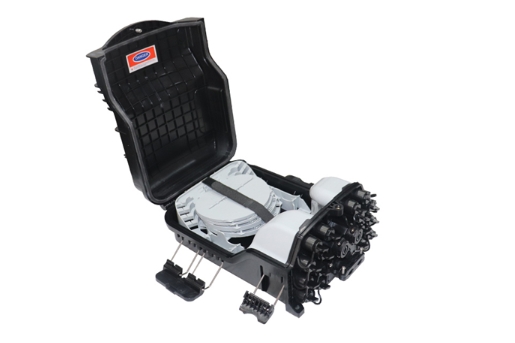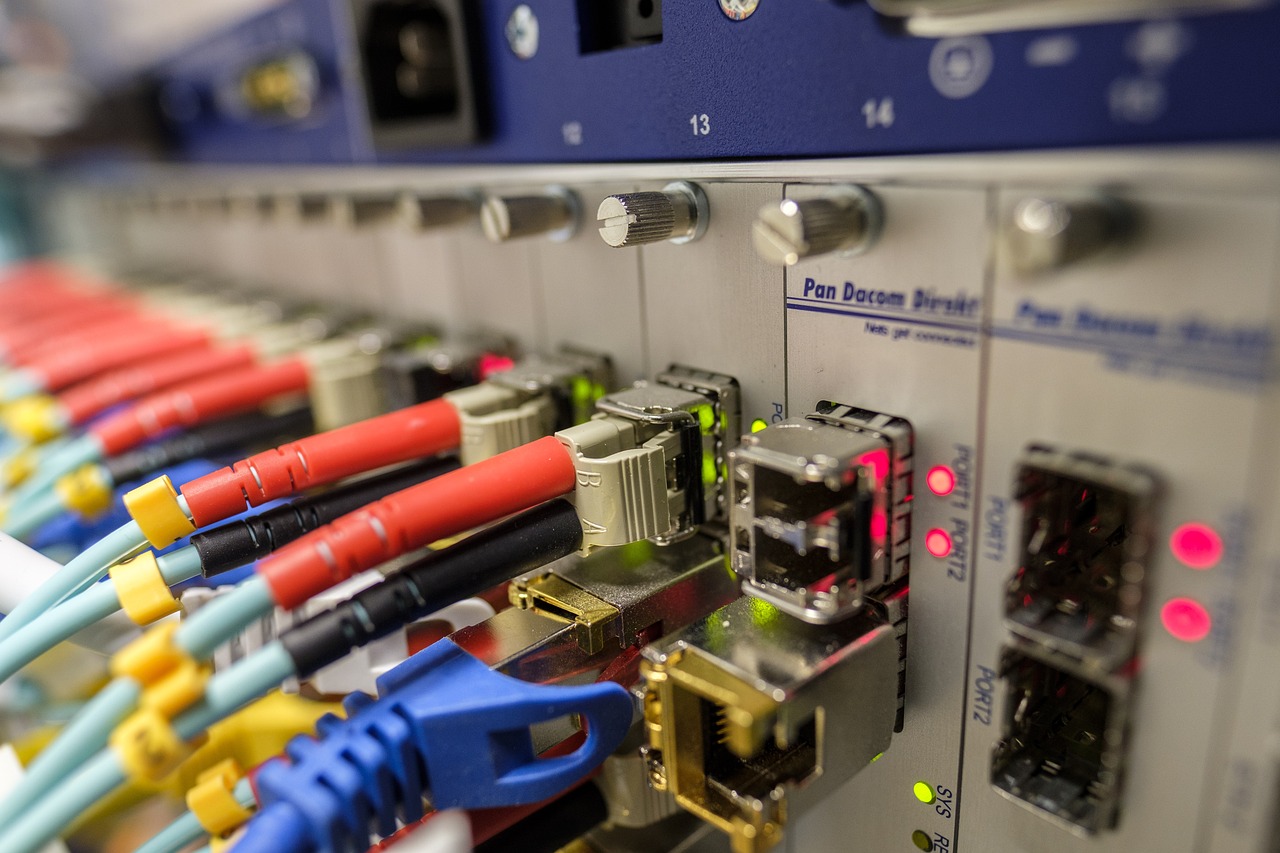Understanding the Crucial Role of FAT Box in FTTx Communication Network Deployment

Welcome to the World of High-Speed Internet: A Primer on FTTx Communication Network
In today's digital age, access to high-speed internet has become a necessity for both personal and professional endeavors. FTTx communication network plays a pivotal role in delivering this high-speed connectivity to homes and businesses. But what exactly is FTTx, and how does it work?
What is FTTx and How Does it Work?
Breaking Down the Acronym: FTTx Explained
FTTx stands for Fiber to the X, where "X" can refer to various locations such as home (FTTH), curb (FTTC), or building (FTTB). This technology involves the deployment of fiber optic cables to provide high-speed internet access directly to end-users.
The Journey of Data: From the Internet to Your Home
When you browse the web or stream content online, data travels through a complex network of servers and cables before reaching your device. With FTTx, this journey becomes more efficient and seamless, resulting in faster and more reliable internet connections.
The Evolution of Internet Connectivity
A Brief History of Internet Speeds
From dial-up connections to early broadband technologies, internet speeds have undergone significant transformations over the years. However, the demand for faster and more robust connectivity continues to grow.
Why FTTx is the Future of Connectivity
As technology advances and data consumption increases, traditional copper-based networks are unable to keep up with the escalating demands. FTTx offers a future-proof solution by leveraging fiber optics to deliver unparalleled speed and performance.
The Heart of the Network: Exploring the FAT Box
As we delve into the inner workings of FTTx communication networks, it's essential to understand the pivotal role played by the FAT Box. This integral component serves as a critical link between the network infrastructure and individual subscribers, ensuring seamless connectivity and efficient signal distribution.
Unpacking the FAT Box: Its Role and Importance
The Anatomy of a FAT Box
The FAT Box is a sophisticated piece of equipment designed to facilitate the seamless transmission of fiber optic signals. It comprises multiple ports for incoming feeder cables and outgoing drop cables, allowing for efficient signal routing and management. Additionally, it houses optical splitters and splice trays, enabling the distribution of signals to individual subscribers with precision and reliability.
How the FAT Box Fits into the FTTx Communication Network
In the grand scheme of FTTx deployment, the FAT Box serves as a crucial termination point for feeder cables from the central office or distribution hub. It acts as a gateway for these signals, efficiently directing them towards individual subscribers' premises through drop cables. This strategic positioning ensures that fiber optic signals are seamlessly distributed, laying the foundation for high-speed internet access at end-users' locations.
The Technical Side: Fiber Splicing and Signal Distribution
The Magic Behind Fiber Splicing
Fiber splicing is a fundamental process within the realm of fiber optic technology. It involves joining two fiber optic cables together to enable continuous signal transmission without loss or interference. This meticulous procedure ensures that data travels seamlessly from one point to another, contributing to reliable internet connectivity.
Ensuring Quality: The Role of the FAT Box in Signal Distribution
The FAT Box plays a pivotal role in maintaining signal integrity during distribution. By housing optical splitters and splice trays, it ensures that fiber splicing is executed with precision, thereby guaranteeing high-quality signal transmission to individual subscribers' premises.
From Theory to Practice: The Art of Fiber Splicing
Now that we've explored the essential role of the FAT Box in FTTx communication networks, let's delve into the intricate process of fiber splicing. This fundamental technique is crucial for ensuring seamless signal transmission and maintaining the integrity of fiber optic connections.
The Basics of Fiber Splicing
What is Fiber Splicing?
Fiber splicing refers to the process of joining two fiber optic cables together to create a continuous pathway for optical signals. This meticulous procedure enables data to travel uninterrupted from the central network to individual subscribers, forming the backbone of reliable internet connectivity.
Types of Fiber Splicing: Mechanical vs. Fusion
There are two primary methods of fiber splicing: mechanical and fusion splicing. Mechanical splicing involves aligning and securing fiber ends using specialized connectors, while fusion splicing employs high-precision equipment to melt and fuse fiber ends together seamlessly. Both techniques are aimed at achieving low-loss, high-strength connections essential for efficient signal transmission.
The Importance of Precision in Fiber Splicing
The Challenges of Fiber Splicing
Achieving precise and reliable fiber splices poses several challenges, including ensuring perfect alignment, minimizing signal loss, and protecting against environmental factors that could degrade connection quality. Overcoming these challenges is essential for maintaining optimal signal integrity throughout the FTTx network.
How Fiber Splicing Affects Internet Speed and Reliability
The quality of fiber splicing directly impacts internet speed and reliability. Well-executed splices minimize signal loss and interference, resulting in faster data transmission and enhanced network stability. By upholding stringent standards in fiber splicing, service providers can deliver consistent high-speed internet experiences to end-users.
Wrapping Up: Why the FAT Box Matters in Your Internet Experience
As we conclude our exploration of the FAT Box and its pivotal role in FTTx communication networks, it's essential to recognize the profound impact it has on everyday internet use.
Beyond the Box: The Impact of the FAT Box on Everyday Internet Use
Faster Internet, Happier Users: The Direct Benefits
The presence of a robust and efficiently managed FAT Box directly translates to faster internet speeds and enhanced user experiences. By ensuring seamless signal distribution and minimal data loss, the FAT Box contributes to reduced latency and improved overall network performance. This results in quicker page loading times, smoother streaming experiences, and more responsive online interactions for end-users.
The Unsung Hero of Internet Connectivity: Recognizing the FAT Box
While end-users may not interact directly with the FAT Box, its significance cannot be overstated. It serves as a silent enabler of high-speed internet access, working tirelessly behind the scenes to ensure that data flows seamlessly from the network to individual premises. Recognizing the role of the FAT Box sheds light on its importance in shaping modern internet experiences.
Looking Ahead: The Future of FTTx and FAT Box Technology
Innovations on the Horizon
As technology continues to advance, innovations in FTTx and FAT Box technology are poised to further elevate internet connectivity. From enhanced signal processing capabilities to streamlined installation processes, ongoing developments aim to make high-speed internet even more accessible and reliable for users worldwide.
The Continuing Importance of the FAT Box in Evolving Networks
Amidst these advancements, one constant remains—the enduring importance of the FAT Box in evolving networks. As new technologies emerge and connectivity demands evolve, this integral component will continue to play a central role in delivering seamless high-speed internet experiences to homes and businesses.
See Also
Comprehending 5G FTTH: A 1 x 32 SC/APC Compact Blockless Fiber Optic PLC Splitter
Crucial Maintenance Pointers for FTTX Outdoor Precon Fiber Optic Distribution Termination Box
Comparison of FTTH Fiber Termination Boxes and Conventional Outdoor Cable Termination Methods


